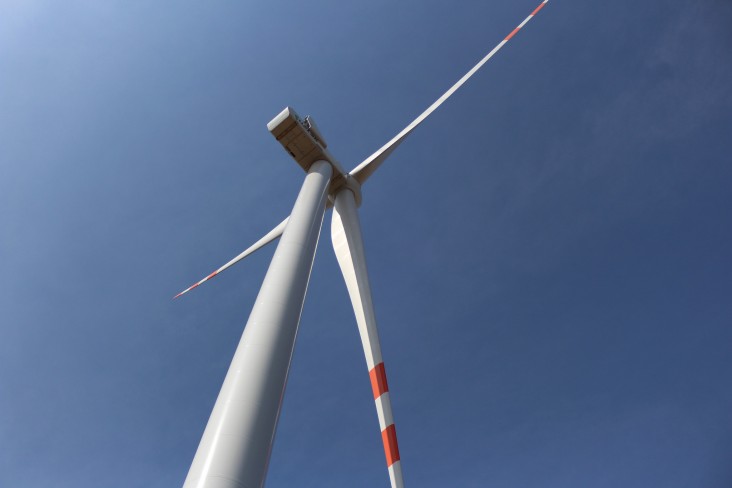Speeches Shim

[As prepared]
Good morning, everyone. I’d like to thank the Caspian Policy Center for organizing today’s discussion. Thank you for having me.
For more than 25 years, USAID has partnered with the people of Central Asia to accelerate their countries’ development, promote stability, and foster regional connectivity and cooperation among the five states—including with Afghanistan.
Our partnerships with private industry are at the heart of our strategy. At USAID, we know that private enterprise is the single most powerful force for improving livelihoods, strengthening communities, and accelerating self-reliance, or the day when foreign assistance is no longer needed.
Increasing Access to Energy and Strengthening Regional Integration
We focus on increasing access to clean, reliable, and affordable energy in Central Asia.
Increasing access to clean energy services is crucial for economic growth, regional stability, and security. Not only does it encourage private sector investment—including from U.S. businesses—it also helps increase trade, builds international cooperation, protects the region’s environment and natural resources, and lowers energy costs. This is particularly important given that the cost of renewables is estimated to account for 70 percent of all new generation investments through 2040.
I’ll share two examples:
-
USAID recently partnered with Kazakhstan to launch the first-in-the-region renewable energy auctions. These auctions have helped to bring in foreign investment and have lowered electricity costs. Over the last two years, 28 auctions have resulted in new, renewable energy projects that could generate electricity for up to 1 million homes. They have also lowered electricity prices by up to 40 percent.
-
Additionally, we are supporting the Secretariat of the Central Asia-South Asia Power Project—or CASA-1000—a $1.2 billion project that will facilitate the export of surplus hydropower from Tajikistan and the Kyrgyz Republic to Afghanistan and Pakistan. This will not only provide access to much-needed electricity to the people of Afghanistan and Pakistan, but it will also create jobs and generate revenues in these countries.
We also focus on strengthening regional cooperation around shared energy resources—including renewable energy. This helps build long-term energy independence and sustainability.
-
In December 2019, Tajikistan, Kazakhstan, Uzbekistan, and the Kyrgyz Republic agreed to adopt a regional water management tool introduced by USAID. This will make it easier to share water resource data and paves the way for optimization of hydropower production.
-
And last year, Kazakhstan, the Kyrgyz Republic, Tajikistan, and Uzbekistan each signed a Memorandum of Understanding or created an Action Plan to cooperate with USAID to establish the Central Asia Regional Electricity Market—also known as CAREM. CAREM will promote energy independence for the region by establishing a transparent, integrated market-based power trade network. This will lead to improved energy reliability and lower electricity costs while also creating an enabling environment for the private sector to thrive.
I’d like to emphasize two points. First, an integrated electricity market will save money for investors and consumers. It will enhance energy security and economic stability, facilitate commercial trade, and attract investments in the power sectors in all five Central Asian countries, as well as their neighboring South Asian countries. This builds long-term energy independence and economic growth.
Second, applying a market-based approach that drives down the costs of grid-connected renewable energy, can increase deployment and integration of regional wind power and solar energy. The use of these two types of renewable energy has grown significantly since 2010. And since that time, their costs have fallen by some 20 percent and 70 percent, respectively. Reducing renewable energy costs helps build a more sustainable energy future.
In addition to our work in Central Asia, USAID also implements energy projects in the broader Caspian region—including in Georgia and Armenia—where we are improving natural gas and electricity transmission infrastructure and promoting energy market liberalization.
While COVID-19 has had a profound impact on USAID’s development programs around the world, our work has not stopped. In Central Asia, we are building on our development successes and reaffirming the partnerships that we have forged over the last 25 years to fight the pandemic
Closing
We are committed to continuing to work with our partners to build a sustainable, clean-energy future. And I am confident that by working together, we can improve energy access and strengthen energy integration from the far eastern borders of the Kyrgyz Republic, to the western shores of Georgia, and beyond.
I look forward to today’s discussion.
Thank you.
Related Speeches
- Remarks by Menglim Kim, Project Management Specialist, USAID/Cambodia, USAID Greening Prey Lang Final Youth Debate
- Remarks by Ms. Veena Reddy, Mission Director, USAID/Cambodia, Launch of Social and Behavior Change Campaign to Protect Forest and Wildlife in Prey Lang
- Remarks by Senior Deputy Assistant Administrator for Asia Gloria Steele at the USAID Mekong Safeguards Launch of the Mekong Infrastructure Tracker

Comment
Make a general inquiry or suggest an improvement.